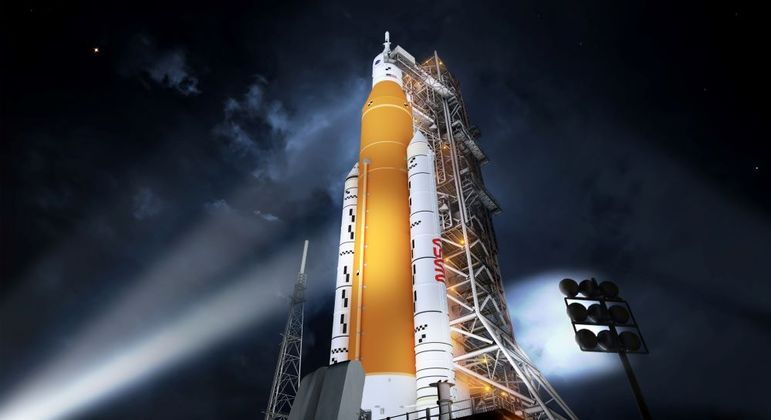NASA on Friday begins a crucial two-day test of its giant Space Launch System (SLS) rocket, which includes a countdown simulation as the agency prepares to take humans to the moon.
Known as a general test with circulation of fuel, it is the last major test ahead of this summer’s Artemis-1 mission in the northern hemisphere: an unmanned lunar flight followed by another manned flight, probably not before 2026.
“This is the last design check before our launch,” said Tom Whitmeyer, a senior NASA official.
The data collected in the test will be used to set a date for Artemis-1: NASA had said the first launch window could be in May, but now it’s more likely to be later.
The 98-meter-tall rocket, designed to be the most powerful in history when operational, was prepared to take off from Launch Complex 39B at the Kennedy Space Center in Florida two weeks ago.
Testing begins at 5:00 pm local time with a “call to stations” when launch control team members arrive at their launch rooms and begin a 45-hour countdown.
With the SLS rocket and the Orion crew capsule fixed to the top lit, teams will load 3.2 million liters of propellant fuel and proceed with procedures such as countdown pauses and other checks.
The rocket’s RS-25 engines have been tested before and will not start. The team will stop the countdown ten seconds before launch to simulate a “scrub” when the launch is aborted due to technical or weather issues.
The fuel will be taken out and days later the SLS and Orion will return to the assembly building for assessments on how it all turned out.
Test logs will be posted on NASA’s blog for the Artemis mission, but the agency will not release live internal audio from the test, as it has done in the past with Space Shuttle missions.
Whitmeyer explained that this is because certain key information, including time sequences, could help other countries that want to develop long-range missiles.
“We are very, very sensitive to cryogenic launch vehicles of this size and capacity, which are very similar to the ballistic-type capabilities that our countries are very interested in,” he said, although he added that the agency could reassess its position in the future.
ia/dw/dem/ll/mvv
–


